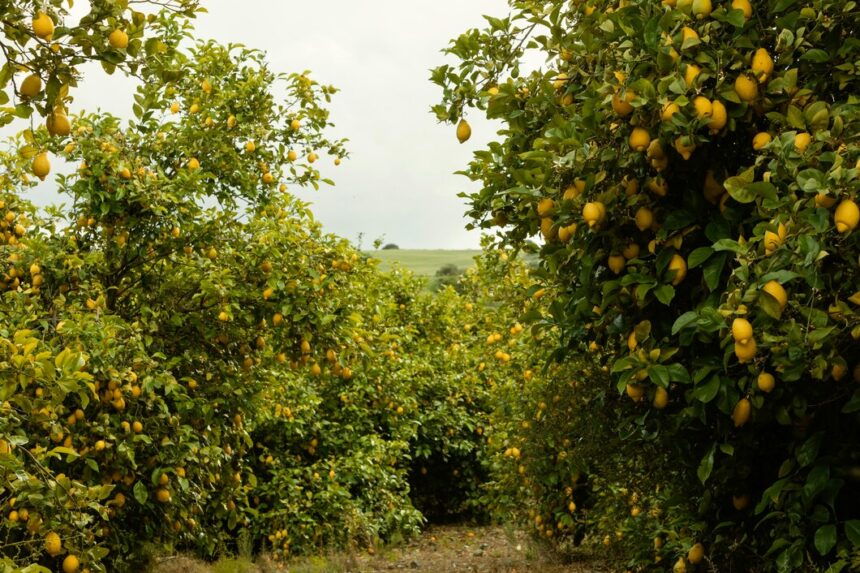Root rot is a common and potentially devastating fungal disease that affects citrus trees, compromising their health and productivity. Early detection is crucial for preventing severe damage and preserving the vitality of your citrus orchard. Here are ten early signs to watch out for that indicate your citrus trees may be suffering from root rot:
- Yellowing Leaves: One of the earliest and most common symptoms of root rot is the yellowing of leaves. This yellowing typically begins at the lower branches of the tree and gradually spreads upward as the disease progresses. The leaves may appear wilted or droopy despite adequate watering.
- Stunted Growth: Citrus trees affected by root rot may exhibit reduced growth or stunted development compared to healthy trees. This can manifest as shorter internodes, smaller leaves, and overall diminished vigor.
- Leaf Drop: As root rot impairs the tree’s ability to uptake water and nutrients, affected citrus trees may prematurely shed their leaves. Look for an excessive amount of dropped leaves, particularly if they are yellow or discolored.
- Thinning Canopy: A sparse or thin canopy is another indicator of root rot in citrus trees. As the disease progresses, the tree may lose branches and foliage, resulting in a less dense and less vibrant appearance.
- Wilting Branches: Branches and twigs affected by root rot may exhibit wilting or dieback, where the leaves and shoots wither and turn brown. This occurs as the fungal infection disrupts the flow of water and nutrients within the tree.
- Sudden Decline in Fruit Production: Root rot can significantly impact fruit production in citrus trees. If you notice a sudden decline in fruit yield or quality, despite favorable growing conditions and proper care, root rot may be the underlying cause.
- Bark Discoloration: Inspect the bark of the citrus tree for any signs of discoloration, particularly dark brown or black lesions. These can indicate the presence of fungal pathogens associated with root rot.
- Presence of Fungal Growth: Root rot is often accompanied by the growth of fungal pathogens on the roots or around the base of the tree. Look for white or grayish fungal growth, as well as signs of rot or decay in the root system.
- Poor Drainage and Waterlogging: Root rot thrives in waterlogged or poorly drained soil conditions. If your citrus orchard experiences frequent flooding or waterlogging, it increases the risk of root rot development.
- Foul Odor: In advanced cases of root rot, the affected roots may emit a foul, musty odor indicative of decay. If you detect an unpleasant smell emanating from the root zone of your citrus trees, it’s a clear sign that something is amiss.
If you observe any of these early signs of root rot in your citrus trees, it’s essential to take immediate action to mitigate the spread of the disease and salvage the affected trees. Here are some steps you can take:
- Improve Drainage: Ensure proper soil drainage to prevent waterlogging and reduce the risk of root rot.
- Prune Affected Branches: Remove and dispose of any diseased or dead branches to prevent the spread of the infection.
- Apply Fungicides: Consider applying fungicides approved for controlling root rot pathogens, following label instructions carefully.
- Improve Soil Health: Amend the soil with organic matter and beneficial microorganisms to promote root health and resilience.
- Practice Crop Rotation: Avoid planting citrus trees in soil where root rot has been previously identified, and practice crop rotation to break the disease cycle.
By recognizing the early signs of root rot and taking proactive measures to address the underlying issues, you can protect your citrus orchard and ensure the continued health and productivity of your trees. Regular monitoring and proper cultural practices are essential for managing root rot and maintaining a thriving citrus garden.
Join 'Farmers Mag' WhatsApp Channel
Get the latest Farming news and tips delivered straight to your WhatsApp
CLICK HERE TO JOIN






